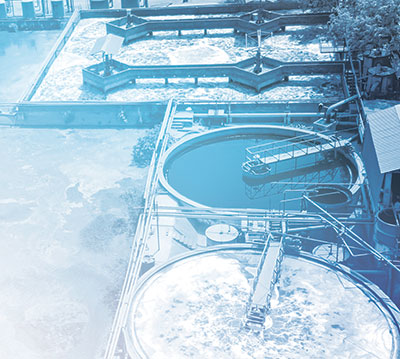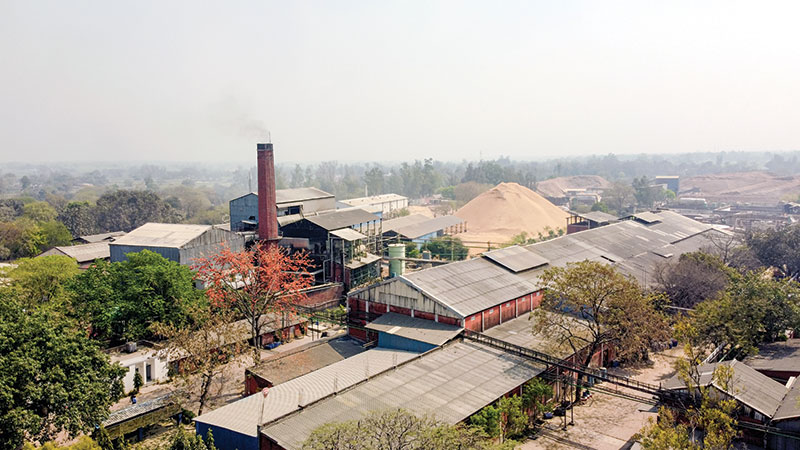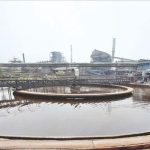
Established in 1981, Pakka Limited has evolved into one of the leaders in compostable packaging solutions, aiming to ensure a cleaner planet. It ensures water efficiency by reducing wastewater at its source. The company uses state-of-the-art technologies like Micro Plate Settler (MPS) to separate reject fibres from paper machine backwater and then reuses the clean water back into the paper machine low and high-pressure shower. According to Mr. Shashi Verma, its Environment Head, more than 45% of the total freshwater consumed is reused back into the process after treatment.
Paper Mart: How do you ensure water efficiency in your operations?
Shashi Verma: At Pakka, we ensure water efficiency by reducing wastewater at its source. We reuse the backwater generated from the paper machines back in the paper machine itself after separating reject fibres from it. Pakka uses state-of-the-art Micro Plate Settler (MPS) technology to separate reject fibres from paper machine backwater and then reuses the clean water back into the paper machine low and high-pressure shower. Additionally, we have also installed MPS in the wet washing section and moulded machine plant.
PM: What is your aggregate annual water consumption? How much has that been reduced over the years?
SV: Pakka’s specific freshwater consumption in FY 2023-24 was 33.0 kl/MT of total production. The trend over the last 4 years is: FY 2023-24: 33.0 kl/MT; FY 2022-23: 36.11 kl/MT; FY 2021-22: 34.26 kl/MT; and FY 2020-21: 44.21 kl/MT. The trend indicates that Pakka has successfully reduced freshwater consumption by approximately 2.75 kl/MT on a year-on-year basis.
Watch: Top Paper Companies 2023
Pakka’s specific freshwater consumption in FY 2023-24 was 33.0 kl/MT of total production. The trend over the last 4 years is: FY 2023-24: 33.0 kl/MT; FY 2022-23: 36.11 kl/MT; FY 2021-22: 34.26 kl/MT; and FY 2020-21: 44.21 kl/MT.
PM: What percentage of water consumed is recycled, and where is the discharged water reused?
SV: More than 45% of the total freshwater consumed is reused back into the process after treatment, prior to its discharge. The primary consumers of treated water are the wet washing and pulp mill, followed by the mould machines and value-added products, such as egg tray plants. Additionally, this treated water is used for gardening, irrigation, and maintaining moisture in the bagasse throughout the year.

PM: What innovative solutions have you introduced in different areas of your mills that have made them more water-efficient?
SV: Use of MPS and DAF technologies in paper machines and wet washing areas, which has led to a significant reduction in wastewater generation, allows us to reuse water at its source. We use RO plant reject water in our pulp mill showers. The usage of low-conductivity water in the cooling towers results in higher COC which further leads to less blowdown/purge. The water is passed through an in-house developed reject RO membrane-based RO system before being passed through the softener plant. Additionally, we’ve introduced a COD load-wise wastewater treatment facility to further improve the reusability of the treated wastewater.
Also Read: Star Paper Mills Plans to Reduce 20% Water Consumption
PM: What is your water usage reduction target? How do you plan to achieve it?
SV: In FY 2023-24, the freshwater consumption target was set at 30 kl/MT of total production. For FY 2024-25, we have undertaken the challenge of reducing our freshwater consumption to 25 kl/MT. The overall water consumption target is then distributed among all sections, with individual targets assigned to each section/process area. This ensures accountability and self-managed teams continuously develop FIP (Focussed Improvement Plans) to achieve the respective targets.
Use of MPS and DAF technologies in paper machines and wet washing areas, which has led to a significant reduction in wastewater generation, allows us to reuse water at its source.
PM: What are the challenges you often face in making your mills water-efficient?
SV: Reducing freshwater consumption in the mill operation comes with challenges, such as quality control, higher operation cost (to ensure the best quality product using backwater), and maintaining the achievements we’ve already made, which involves regular checks and raising team awareness of water conservation.




